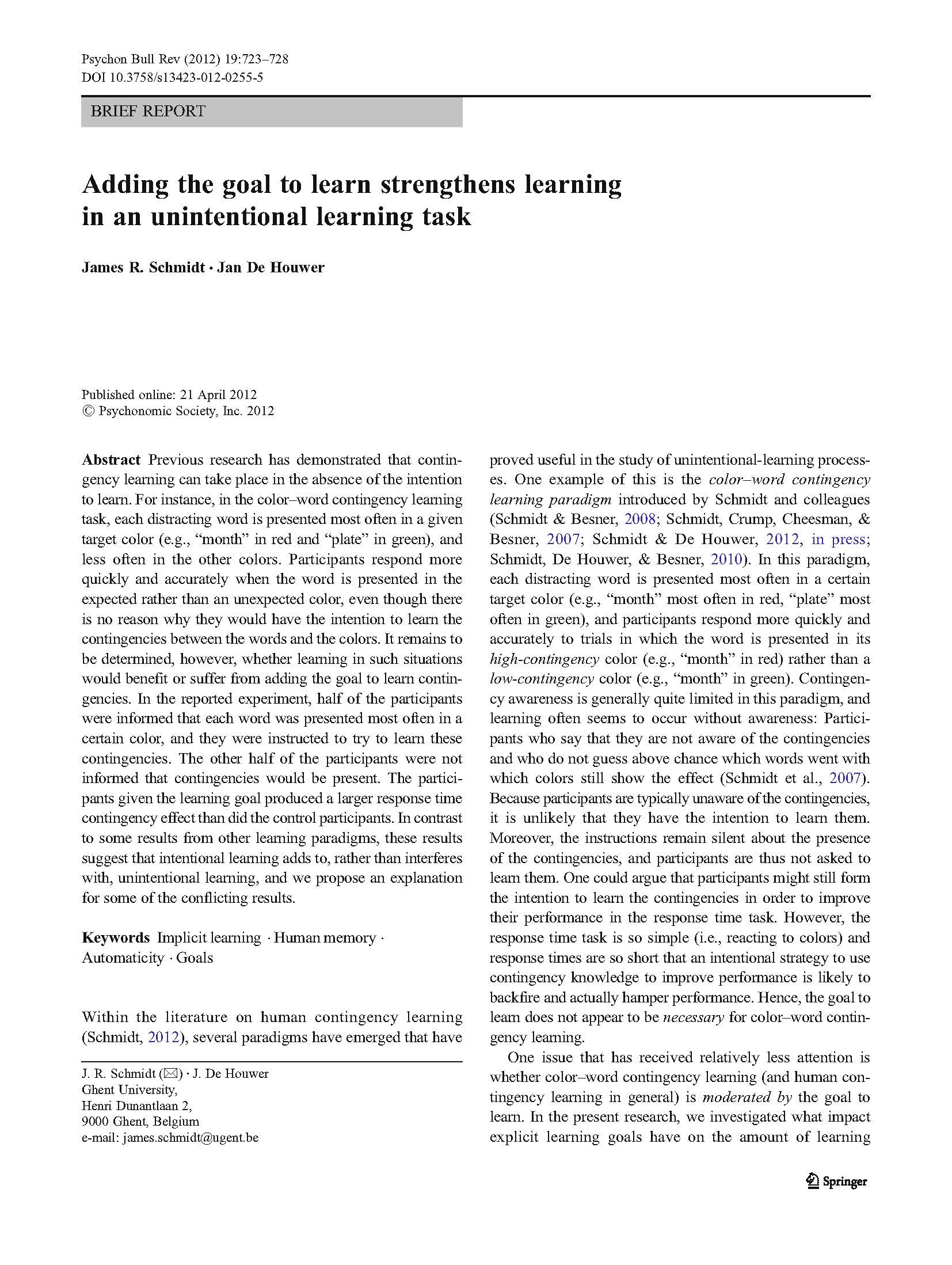Previous research has demonstrated that contingency learning can take place in the absence of the intention to learn. For instance, in the color-word contingency learning task, each distracting word is presented most often in a given target color (e.g., “month” in red and “plate” in green), and less often in the other colors. Participants respond more quickly and accurately when the word is presented in the expected rather than an unexpected color, even though there is no reason why they would have the intention to learn the contingencies between the words and the colors. It remains to be determined, however, whether learning in such situations would benefit or suffer from adding the goal to learn contingencies. In the reported experiment, half of the participants were informed that each word was presented most often in a certain color, and they were instructed to try to learn these contingencies. The other half of the participants were not informed that contingencies would be present. The participants given the learning goal produced a larger response time contingency effect than did the control participants. In contrast to some results from other learning paradigms, these results suggest that intentional learning adds to, rather than interferes with, unintentional learning, and we propose an explanation for some of the conflicting results.
Adding the goal to learn strengthens learning in an unintentional learning task
